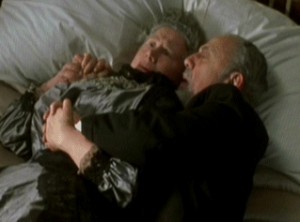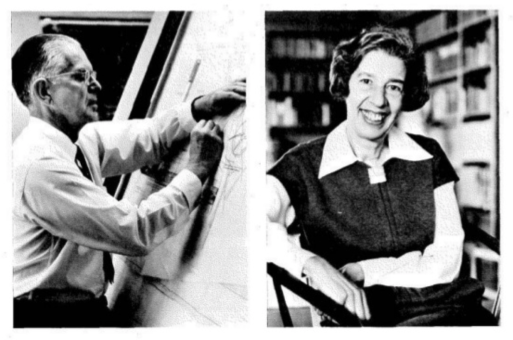
Ida and Isador wait for death in the movie, “Titanic”
While on a long sabbatical of sorts, I share with you one of my favorite articles I wrote in the past to ring in this New Year.
Many of us are familiar with Ida Straus, wife of Isidor Straus, the co-owner of the famous Macy’s department stores. And even if you are not familiar with their names, you are surely familiar with their enduring love story. Ida was the woman who passed on a seat in one of the few available lifeboats on the infamous Titanic as the crew called for “women and children first”. Her loving statement about her husband will always stay with us:
“We have been together for 40 years, and we will not separate now.”
We watched her portrayed in the film “Titanic” as she lay with Isidor in their cabin room bed, hugging him fiercely while the sound of the band played and the Titanic filled with water. It was a deeply touching story of a woman’s love for her husband –a love so intense she sacrificed her life.
Yet few have heard the story of Henry Dreyfuss, the prolific industrial designer who gave us many of our iconic household products from the 1930s to the 1970s. Dreyfuss helped shape the objects of our culture, from the basic black Bell telephone, standard fare for almost 20 years, to the first SX70 Polaroid Land Camera, which allowed everyone their voyeuristic 15 minutes of fame (think Andy Warhol’s Polaroids). Dreyfuss also developed the lesser-known but widely impactful Measure of Man and Woman: Human Factors in Design reference series, a set of measurement templates designers use when creating any type of product that interacts with the human body. It not only influenced many of our products, but also inserted the term “ergonomics” permanently into our everyday language.
Sadly, in 1972 Henry Dreyfuss’ wife and sometimes business partner, Doris Marks Dreyfuss, was diagnosed with terminal liver cancer at 69. Henry was 68, in perfect health and at the peak of his career as one of the top celebrity industrial designers in the world. On October 5th, 1972, on a Thursday night at their South Pasadena, California home, Henry put on a tuxedo and Doris a full-length evening gown and they went into their carriage house. In the main house they neatly left notes, instructions and a key to the carriage house. With the carriage house doors closed, they sat in their car and turned on the engine and poured two glasses of the best champagne and toasted to their great life together. They proceeded to sip champagne as they slipped away forever. Like Ida Straus, Henry Dreyfuss gave up what others spend a lifetime attempting to attain, simply in the name of undying love for his wife.
And so as we enter into this New Year, these two stories give us pause to contemplate what are truly the important things in life, the parts of life that can turn death into a heartfelt choice.
On that note as the new year approaches, we wish all of our readers, whom we treasure and who have been our loyal followers, an even happier and healthier (or painless) 2019! We thank you for joining in helping SevenPonds open the conversation on death as we look forward to another year with each and every one of you.
From all of us at SevenPonds, we wish you the best possible 2019!

 Ringing in the New Year!
Ringing in the New Year!





 How Dare You Die Now!
How Dare You Die Now!
 Debating Medical Aid in Dying
Debating Medical Aid in Dying
 “Help Me, Helen”
“Help Me, Helen”














